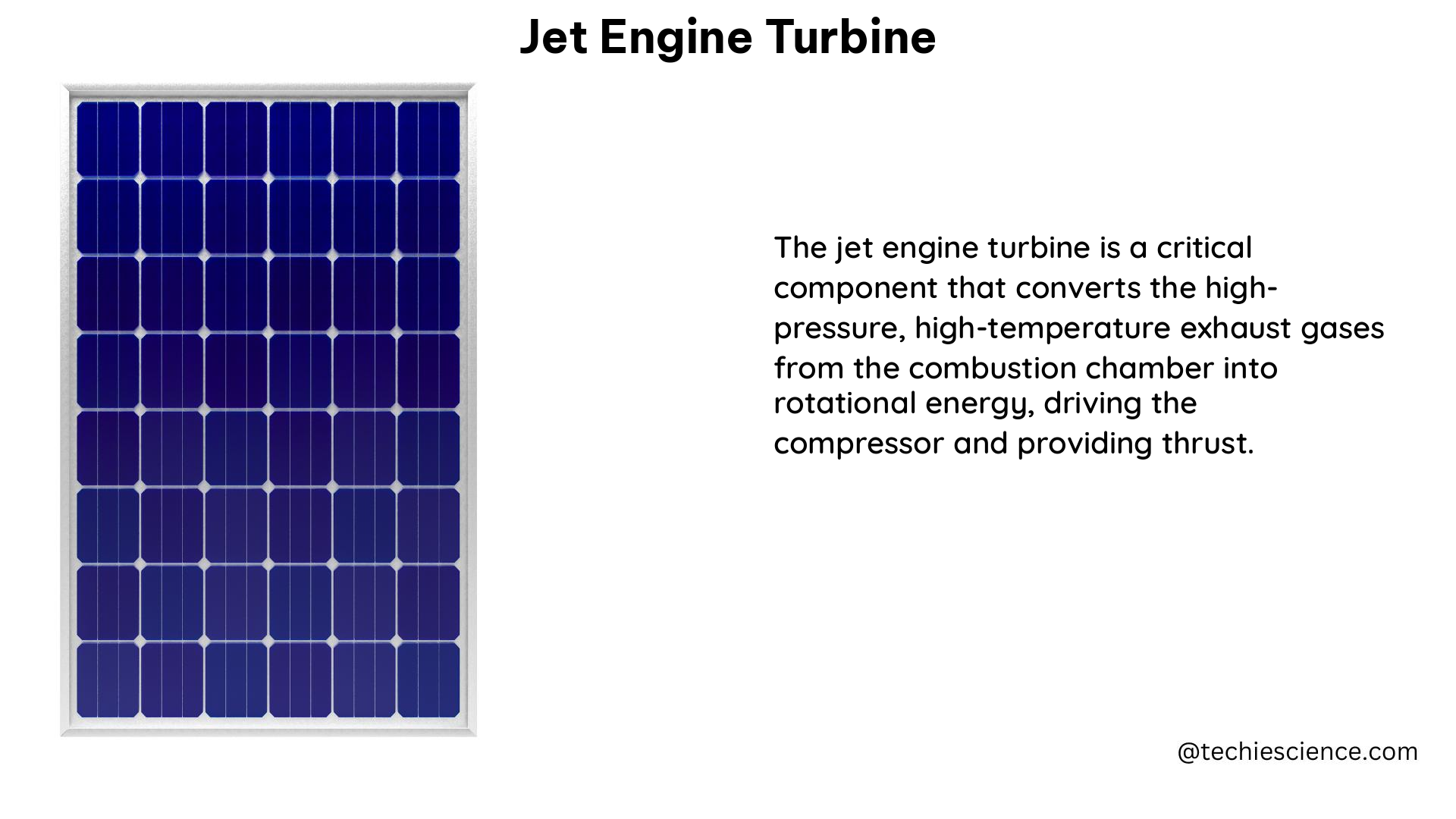Jet engine turbines are the heart of modern aviation, responsible for converting the energy of fuel into the mechanical power that propels aircraft through the skies. These complex machines are engineered to operate under extreme conditions, delivering unparalleled performance and efficiency. In this comprehensive guide, we’ll delve into the intricate details of jet engine turbines, exploring their key components, operating principles, and the factors that influence their performance.
Compressor: The Lifeblood of the Jet Engine Turbine
The compressor is the critical component that sets the stage for the jet engine turbine’s operation. Its primary function is to compress the incoming air, increasing its pressure and temperature. This compressed air is then mixed with fuel and ignited in the combustion chamber, generating a high-velocity gas stream that drives the turbine.
The efficiency of the compressor is measured by its pressure ratio, which is the ratio of the air pressure at the compressor outlet to the air pressure at the compressor inlet. A higher pressure ratio indicates a more efficient compressor, as it can compress the air to a higher pressure using less energy. Typical jet engine turbine compressors have pressure ratios ranging from 15 to 25.
Turbine Inlet Temperature: The Key to Efficiency

The turbine inlet temperature (TIT) is another crucial factor that affects the performance of a jet engine turbine. This temperature represents the temperature of the gas stream as it enters the turbine. A higher TIT indicates a more efficient engine, as it can extract more energy from the gas stream. However, excessively high TITs can lead to increased wear and tear on the turbine blades, potentially reducing the engine’s lifespan.
The TIT of a jet engine turbine is typically in the range of 1,500 to 1,800 degrees Celsius, depending on the engine design and operating conditions.
Thrust: The Measure of Power
The thrust of a jet engine turbine is the force that propels the aircraft forward. It is typically measured in pounds or kilograms and is determined by the mass flow rate of the air through the engine and the velocity of the exhaust gases. A higher mass flow rate and a higher exhaust gas velocity will result in a higher thrust.
The thrust of a jet engine turbine can range from 10,000 to 100,000 pounds, depending on the engine size and design.
Fuel Efficiency: Maximizing Performance
The fuel efficiency of a jet engine turbine is measured by its specific fuel consumption (SFC), which is the ratio of the mass of fuel consumed to the thrust produced. A lower SFC indicates a more fuel-efficient engine, which is crucial for reducing operating costs and environmental impact.
The SFC of a jet engine turbine is typically in the range of 0.5 to 0.8 pounds of fuel per pound of thrust per hour.
Regulatory Oversight: Ensuring Safety and Reliability
Jet engine turbines are subject to a comprehensive set of technical specifications and regulations, primarily set by the Federal Aviation Administration (FAA). These regulations are designed to ensure the safety, reliability, and environmental impact of these critical aviation components.
Manufacturers must adhere to strict guidelines regarding the design, construction, and operation of jet engine turbines, ensuring that they meet the highest standards of performance and safety.
Technological Advancements: Pushing the Boundaries
The field of jet engine turbine technology is constantly evolving, with ongoing research and development aimed at improving performance, efficiency, and reliability. From advanced materials and manufacturing techniques to innovative design approaches, the industry is continuously pushing the boundaries of what is possible.
Emerging technologies, such as the integration of the Internet of Things (IoT) for predictive maintenance and real-time monitoring, are further enhancing the capabilities of jet engine turbines, ensuring their continued relevance in the ever-evolving world of aviation.
Conclusion
Jet engine turbines are the backbone of modern aviation, powering aircraft with unparalleled efficiency and performance. By understanding the intricate details of their key components, operating principles, and the factors that influence their performance, we can gain a deeper appreciation for the engineering marvels that keep our skies safe and our flights smooth.
As the industry continues to evolve, the role of jet engine turbines will only become more crucial, driving the future of air travel and shaping the way we experience the world from above.
References:
- Practical Techniques for Modeling Gas Turbine Engine Performance, NASA Technical Reports Server, 2016.
- How Rolls-Royce Maintains Jet Engines With the IoT, RTInsights, 2016.
- A novel method for the natural frequency estimation of the jet engine turbine blade, ScienceDirect, 2024.
- Jet Engine Fundamentals, GE Aviation, 2020.
- Turbine Blade Cooling in Jet Engines, ASME, 2018.
- Advances in Jet Engine Technology, Aerospace Engineering, 2022.

The lambdageeks.com Core SME Team is a group of experienced subject matter experts from diverse scientific and technical fields including Physics, Chemistry, Technology,Electronics & Electrical Engineering, Automotive, Mechanical Engineering. Our team collaborates to create high-quality, well-researched articles on a wide range of science and technology topics for the lambdageeks.com website.
All Our Senior SME are having more than 7 Years of experience in the respective fields . They are either Working Industry Professionals or assocaited With different Universities. Refer Our Authors Page to get to know About our Core SMEs.